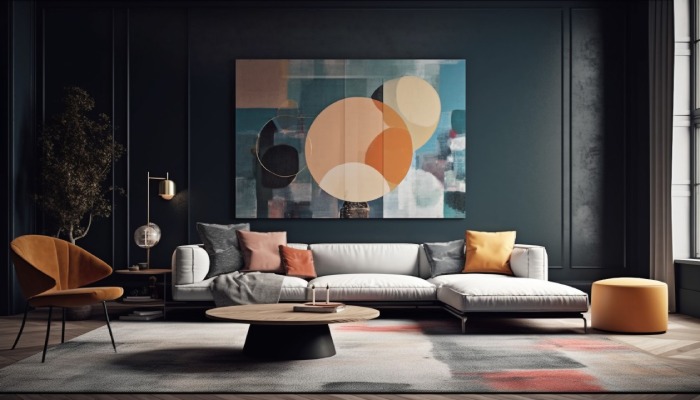The modern lightbox is versatile, blending art and utility to enrich environments. Evolving from advertising origins, these visual marvels now serve as sophisticated design components, altering spaces dramatically. Light box displays harmoniously merge form and function, broadcasting narratives and evoking emotions while illuminating surroundings. From their crude beginnings to today’s LED-driven devices, light boxes have carved a distinct niche in design, with a rich historical tapestry and a growing role in eco-conscious manufacturing processes.
Table of Contents
- Key Takeaways
- Understanding Light Boxes: A Blend of Art and Practicality
- Light Boxes in Commercial Use: Impact on Business and Branding
- Technical Considerations: Choosing the Right Light Box
- Visual Appeal: Design Trends in Lightbox Art
- The Future is Bright: Innovations in Light Box Technology
- Ethical Sourcing and Sustainability in Light Box Manufacturing
Key Takeaways
- Lightboxes marry artistic flair with multifaceted functionality, offering aesthetic enhancement alongside practical illumination.
- Grasping the influence of light on human emotions and spatial perception is vital when contemplating light box design and placement.
- Technological advancements create openings for innovative, energy-efficient, and sustainable lightbox designs.
Understanding Light Boxes: A Blend of Art and Practicality
The concept of light boxes may summon images of vivid display cases in bustling shopping districts or sleek, backlit menus in trendy diners. Yet, the true potential of a light box display extends far beyond these typical applications. The real magic lies in their ability to simultaneously serve as platforms for stunning visual presentations and practical sources of directed or ambient lighting. Throughout the ages, light boxes have metamorphosed from their preliminary incarnations as bulky, incandescent-lit displays to sleek and energy-saving designs, largely thanks to LED innovations. This evolution has birthed a landscape where light boxes are instrumental in both the advertising sector and intimate settings alike—each one echoing a unique narrative or design philosophy.
Light Boxes in Commercial Use: Impact on Business and Branding
Light boxes have steadfastly ascended as vanguards for advertising and branding strategies in the commercial arena. By harnessing the captivating power of light, businesses illuminate their key messages and logos, drawing the gaze of potential customers and solidifying their brand’s visual presence in a saturated market. In retail spaces, strategically placed light boxes underscore product attributes and enhance the shopping atmosphere, elevating customer experiences. A light box’s consistent and focused brilliance means that advertising content remains legible and prominent—day or night. As crucial visual merchandising elements, they transform window displays and in-store setups into canvases for persuasive storytelling, echoing a brand’s ethos with clarity and impact.
Technical Considerations: Choosing the Right Light Box
Deciding on the appropriate lightbox for your space goes beyond aesthetic considerations; it encompasses various technical aspects influencing its performance and suitability. Size, luminescence, color temperature, and energy consumption are a few variables in a complex equation. Especially now, with energy efficiency taking center stage amid worldwide environmental initiatives, LED light boxes shine as ideals of sustainability and low power usage, all while delivering superior luminosity.
Visual Appeal: Design Trends in Lightbox Art
The field of light box art has burgeoned into a phenomenon where these devices are no longer mere vessels for display but artistic statements in their own right. The interplay of shadow and light, nuanced with color, invites an exploration of narrative and mood within the confines of a sleek frame. The canvas of a light box is a gateway to profound expressions, open to the interpretation and creativity of visual artists who wish to push the boundaries of conventional imagery. Contemporary trends showcase light boxes as centerpieces that house animated scenes, tantalizing color gradients, and even interactive touchpoints that respond to the observer’s movements—redefining the concept of static artwork into something dynamic and engaging.
The Future is Bright: Innovations in Light Box Technology
The horizon for lightbox technology is aglow with the promise of novel features that prioritize user engagement, adaptability, and environmental stewardship. There is burgeoning work towards integrating sensors that adjust lighting based on ambient conditions or viewer presence and even the exploration of materials that further reduce the footprint of lightbox manufacturing and usage. The prospect of intelligent light boxes, which would respond intuitively to user preferences and environmental cues, heralds an age where interactive and reactive lighting is the norm. Such exciting progress portends a future where light boxes are not merely functional or decorative but are intelligent agents in our daily environments, responsive to our needs and gentle on our planet.
Ethical Sourcing and Sustainability in Light Box Manufacturing
The conscientious production of light boxes aligns closely with the heart of ethical sourcing and sustainable manufacturing—a mantra that resonates more strongly with each passing day. As the public becomes increasingly attuned to the narratives of the products they purchase, the impetus for manufacturers to adopt responsible practices has never been greater. This involves a scrutinizing eye toward the origin of input materials, a commitment to reducing waste and resource consumption, and an overarching goal to minimize adverse environmental impacts. Responsible light box manufacturers leading the vanguard in such practices understand that their audience seeks more than aesthetics and functionality. They look for reassurance that the products embody values of sustainability and ethical consideration, making it imperative for the design industry to uphold these ideals and foster a new paradigm where beauty is inseparable from responsibility.
